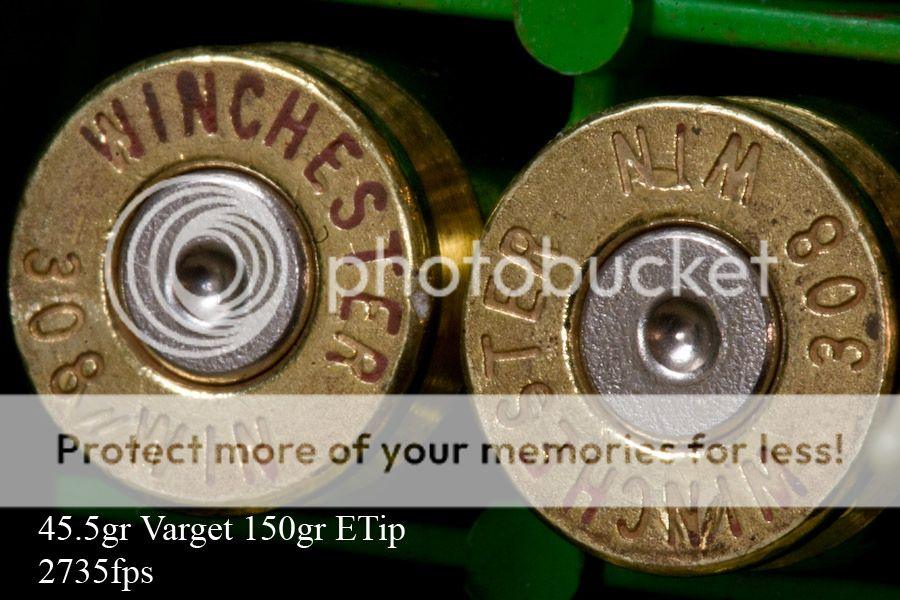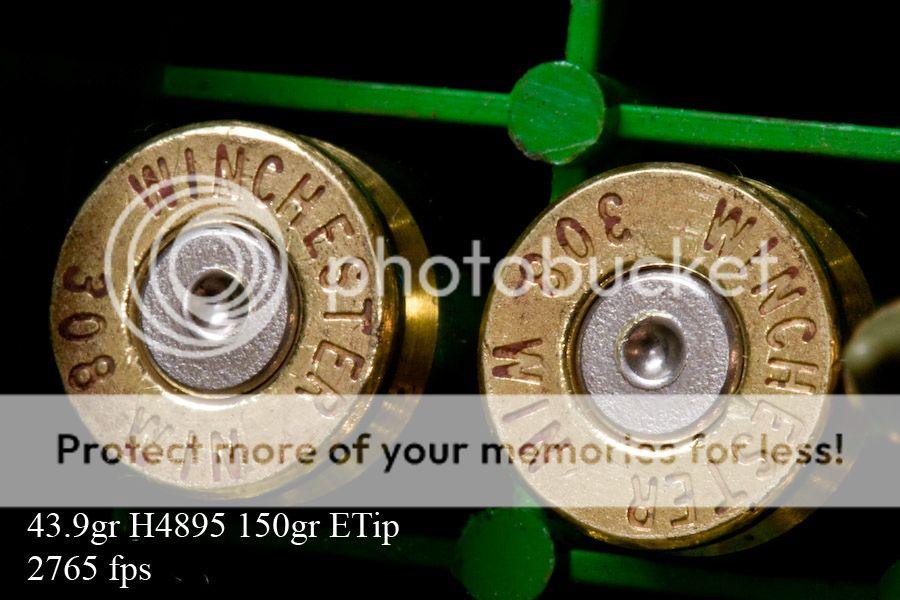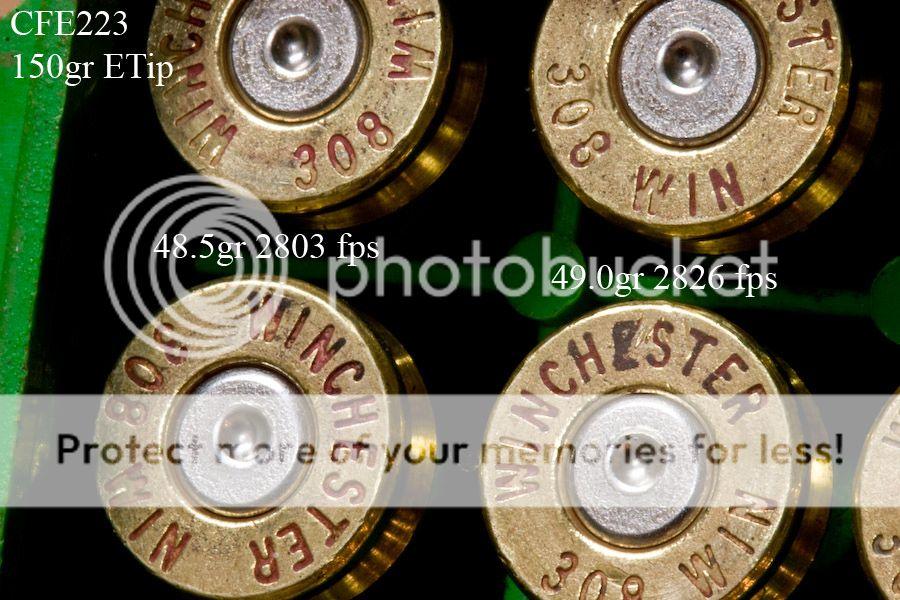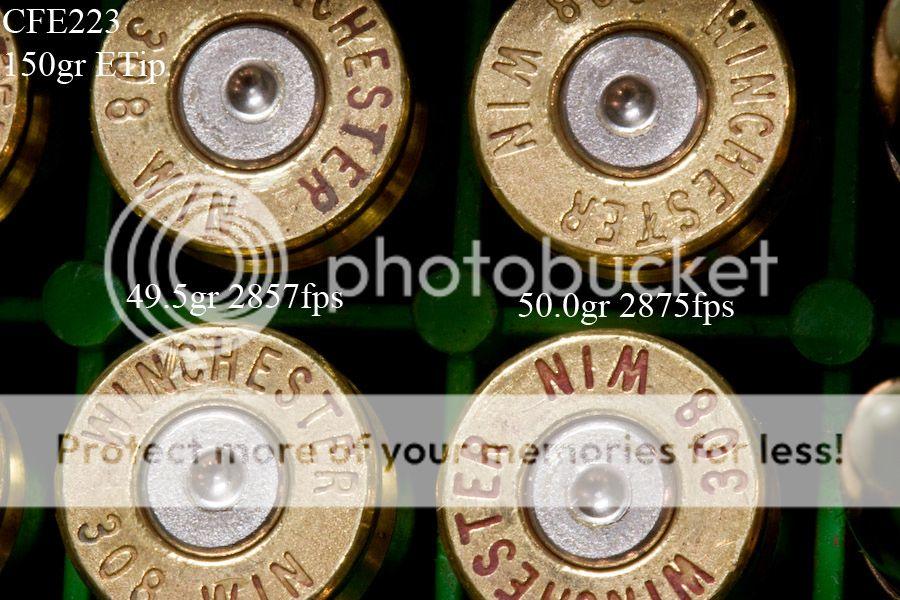davkrat
Well-Known Member
I posted some photos of my primers before with the 150gr ETip loads. I seem to get slightly cratered primers regularly at what seem like safe loads based on charge and velocities. Someone suggested I may have a worn firing pin. Rifle's a few years old with several hundred rounds through it. Here are some photos of the primers from the loads I recently shot trying to compare my standard Varget load with H4895 and CFE223. The CFE223 got higher velocity at what seems like lower pressure. The shoulder of the primers seem less flattened with the CFE223 but the cratering is more pronounced? Never had anything that looked like this with other guns and loads. I can't seem to get anywhere near the suggested loading manual velocities and the increases in velocity were pretty small as charge increased. Any help or suggestions appreciated.








